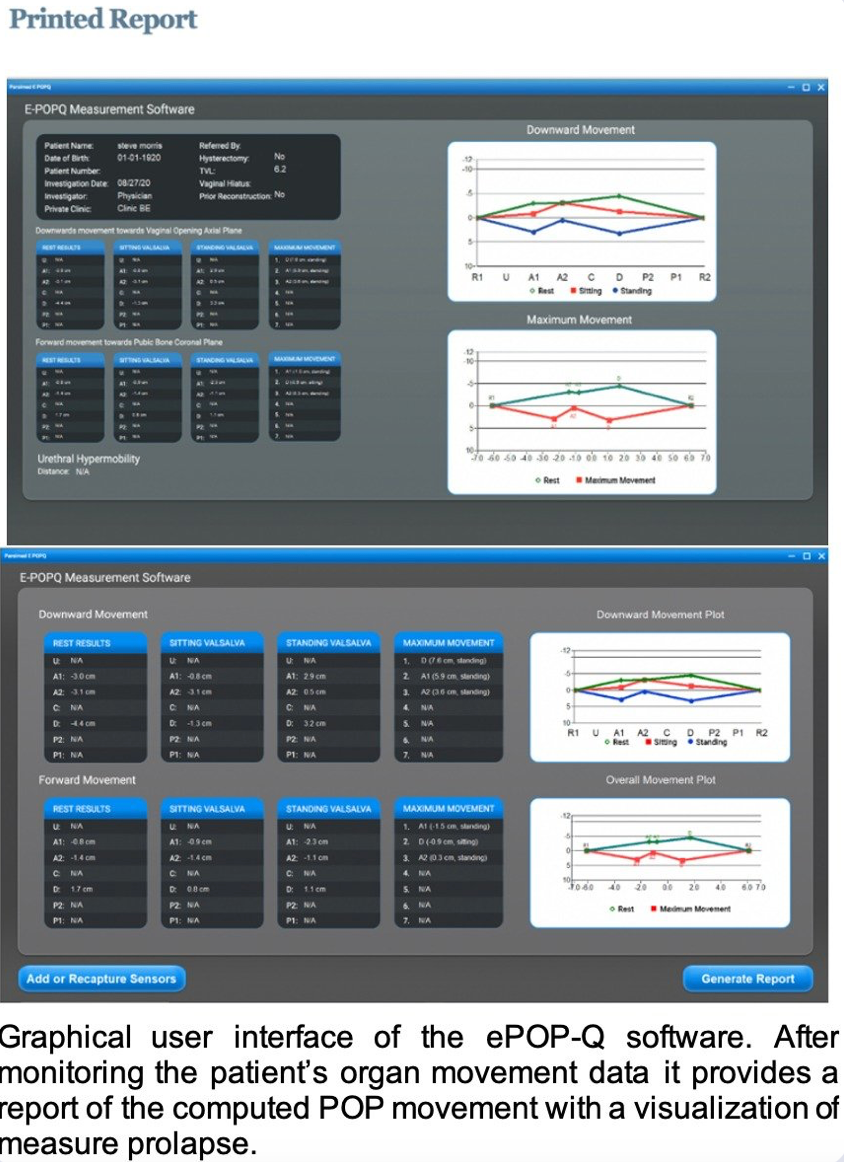
ePOP-Q Test
The sensor assignment process is a guided walk-through using visual anatomy references, requiring only a single button press per sensor assignment. The user places a sensor near the tracking hardware to begin assignment, and then touches an available anatomy location. The software supports patients with different anatomical features by modifying the visual anatomy references based on a patient’s surgical data. The software guides the user through first assigning reference sensors, then assigning sensors to available anatomy locations, with visual confirmation of sensor assignments. The software prevents the user from accidentally overwriting previously acquired points.

Our system allows the integration of digital ePOP-Q data with the patients/site’s Electronic Health Records (EHR). Upon software startup the user is presented with a patient data input menu, allowing capture of information including patient name, identification number, relevant patient surgical data, and physician and hospital information. The completely custom graphic user interface will provide the user with a simple and reliable interface with the hardware and sensors. This is a unique and specially developed interface. The GUI will allow the input of relevant patient information of a given diagnostic procedure and provide custom illustrations and diagrams to detail the steps of the test. The GUI will also allow the user to dynamically assign sensors to specific anatomy locations depending on the scope of the diagnostic procedure and then capture data. The user will be allowed to add or recapture data throughout the test. Upon completion, the software will provide a report of the computed POP movement with a visualization of measure prolapse. Physician and hospital information can be stored for auto-population in order to minimize user input errors. After completing patient input information, the software establishes communication with the sensor tracking software and waits until a sensor assembly is attached. Once attached the software queries memory embedded within the sensor assembly for: product type, product ID, a prior use flag, and authenticity checks.
After all necessary location information is captured the system presents the findings to the end user, along with marking the sensor assembly as used. Snapshot information and relative movement between snapshots are presented in both numerical and graphical form. Additionally, if sufficient sensor data has been captured the system will present a representative image of the severity of prolapse
